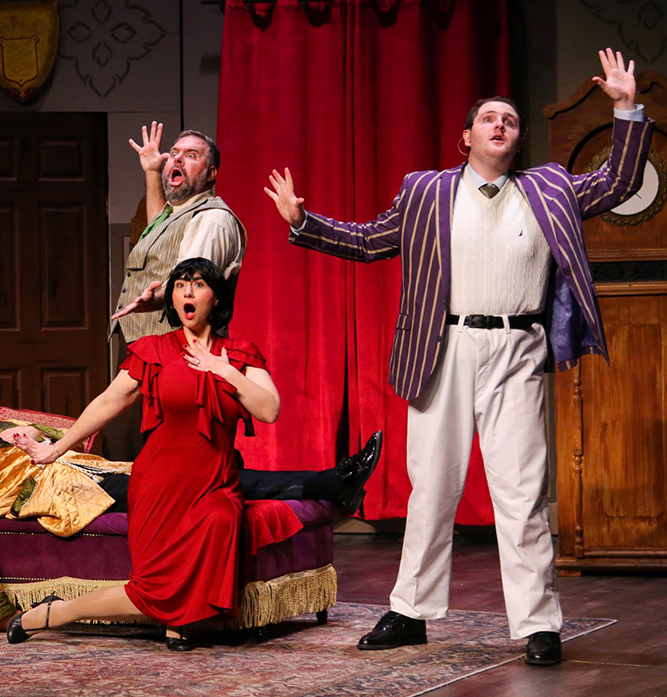Theater at the Mount‘s October 16 Performance Sells Tickets and Laughs
By Elysian Alder | Observer Contributor

On Sunday, October 16— the day of the Theater at the Mount’s final production of The Play That Goes Wrong,pulling up the website to purchase tickets for the show revealed a pleasantly surprising fact: tickets were selling, and they were selling fast.
Within ten minutes, the total number of tickets remaining went from 87 to 62, and that didn’t even account for the tickets that would doubtlessly be purchased on-site at the box office. To put those numbers into perspective, the website for Theater at the Mount stated that the theater can seat a whopping total of “515 people in 15 unobstructed rows.”
With a 2:00 PM showtime, showing up even fifteen minutes before curtain time would turn out to be a risky gamble when it came to obtaining parking in close proximity to the entrance.
After speaking with Gail Steele, the long-time director of the theater itself, she provided some insight as to why that would be. When it comes to what types of shows the theater chooses to put on, she said, “We very much are responsive to our clientele, and what our clientele likes are musicals, classic comedies— we don’t do well with heavy dramas.” So, the reception and turnout that their production of The Play That Goes Wrong received, even on just that final performance of it, supports that sentiment entirely.
A 2012 play by Henry Lewis, Jonathan Sayer, and Henry Shields of Mischief Theatre Company, The Play That Goes Wrong has been described by the website Broadway Goes Wrong as “a hilarious hybrid of Monty Python and Sherlock Holmes,” which falls squarely into the category mentioned by Steele: classic comedies.
It’s a play within a play, where the actors are playing actors who are also putting on a play— a murder mystery, to be exact. Hijinks, shenanigans, and downright disasters ensue over the course of the play.
British accents are donned, cues are missed, words are mispronounced by a character who writes their lines on their hand to remember them, props are “broken” convincingly, and one of the “actors” is hauled off of the stage through a makeshift window after she’s accidentally rendered unconscious by another character, only to be replaced by a clumsy stagehand who’s given the script to read on the fly. It’s all in the name of comedy, of course, and there was no shortage of laughs that day from the packed crowd.
After the curtains closed, patrons and audience members on the way out could be heard chatting contentedly with one another, saying things along the lines of, “That was just what I needed,” or, “You didn’t stop laughing the whole time.”
In a mostly post-pandemic world, Steele said, “Since we reopened after Covid, this is the first show where I feel like we’re back up to where we were before Covid. We’ve done four or five shows since Covid, and attendance was off, but this is the first time it feels like we’re getting back to normal. People were really slow to come back.”
But come back they did, and in inarguable droves. Theater at the Mount isn’t the only performance art medium to have struggled and suffered attendance losses as a result of the pandemic, even during the aftermath, so to speak. An article from The New York Times was published with a subheading that stated that Broadway itself had “attendance that was soft” and “multiple shows that have closed.”
Yet, the arts and theater itself have survived and prevailed. Just a few quick flips through the playbill provided before the show revealed a who’s who in the cast page, where patrons can read brief biographies for each cast member and a statement or two from some of them, and almost every quote included makes mention of how tight-knit the cast and crew are.
Kate Sheridan, who plays Annie in The Play That Goes Wrong, is quoted saying, “Thanks to the fam (TAM & biological) for the love and support. I hope we give you a giggle.” She isn’t alone in emphasizing the importance of that found family feeling. Steele agreed that the resilience of theater arts shows how important having a sense of community, an outlet for temporary escapism, and opportunities for connection is, and that it “goes a long way toward healing a lot of the depression and anxiety that people are experiencing. It’s good for your health.”
Comments are closed.